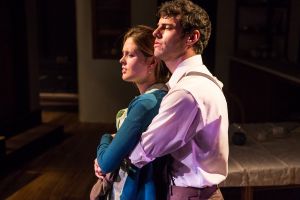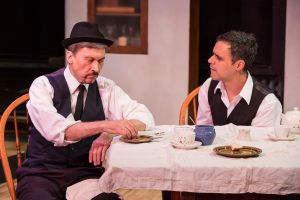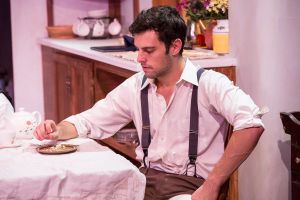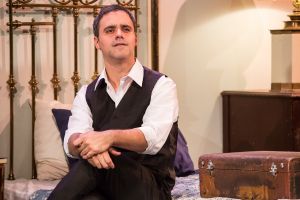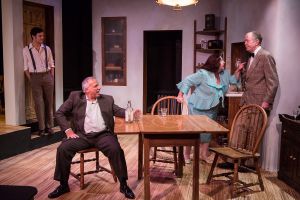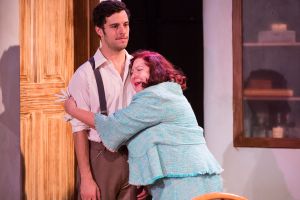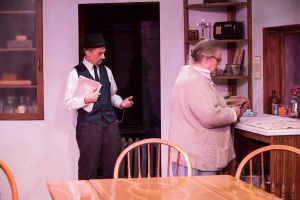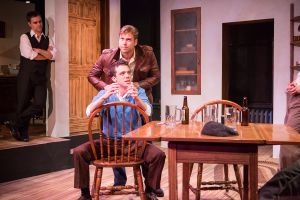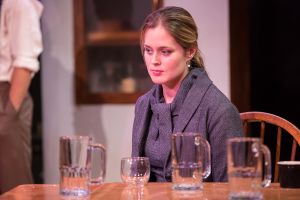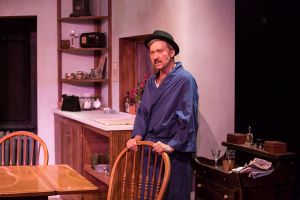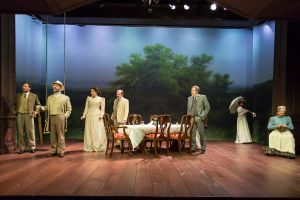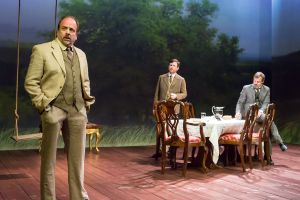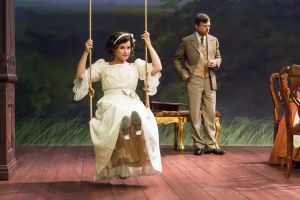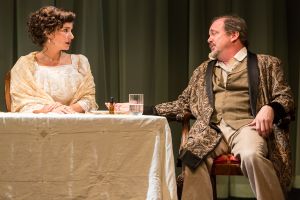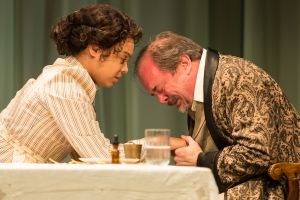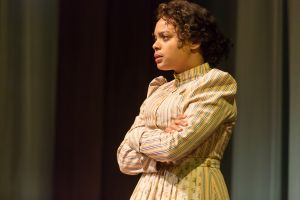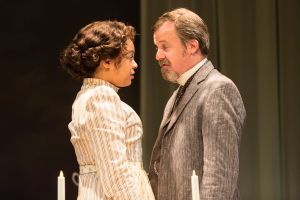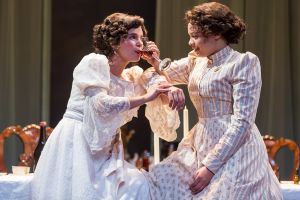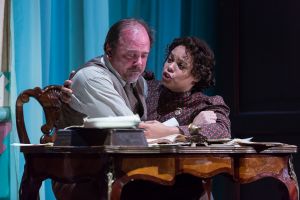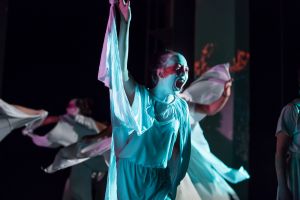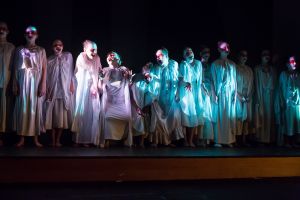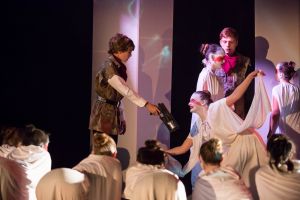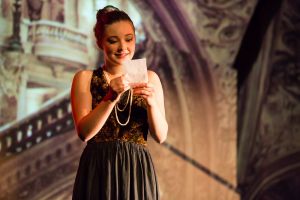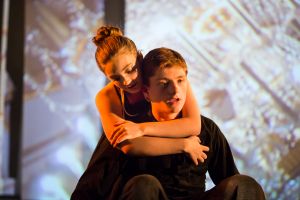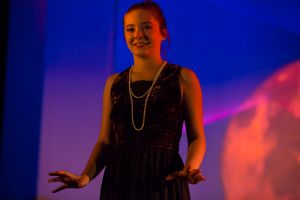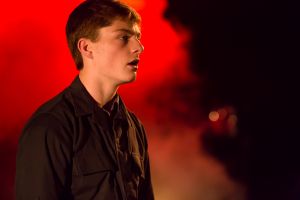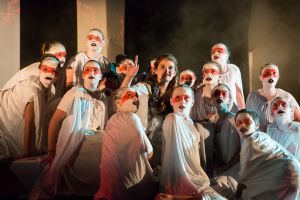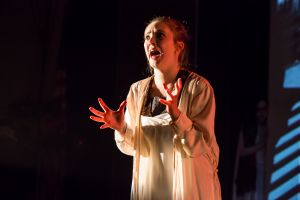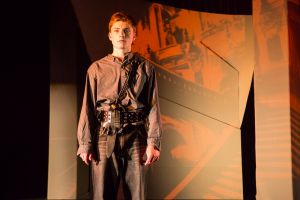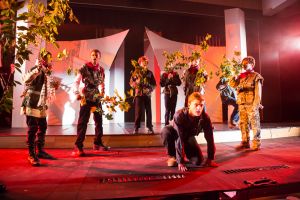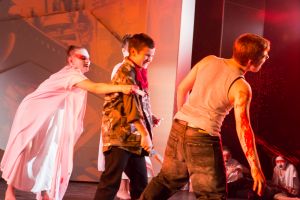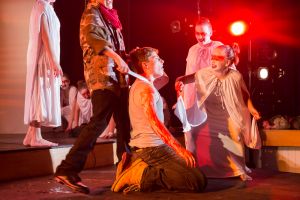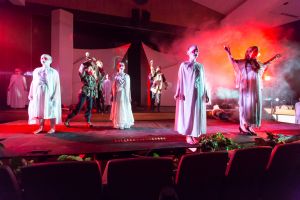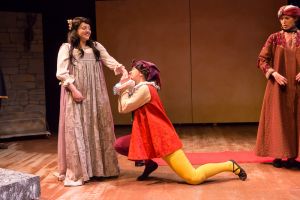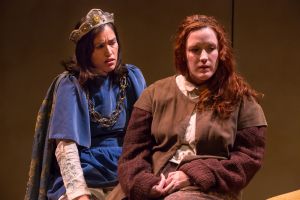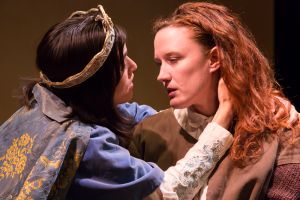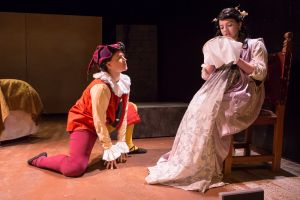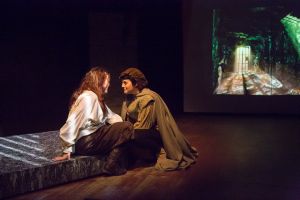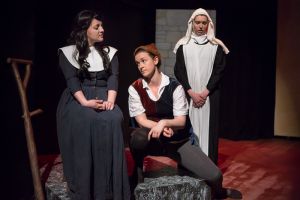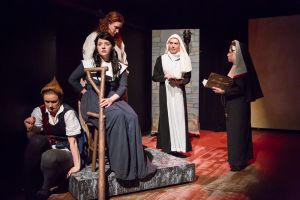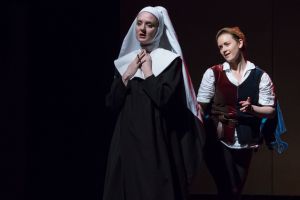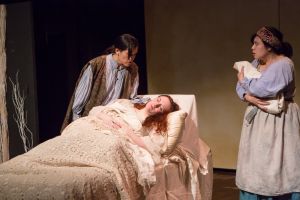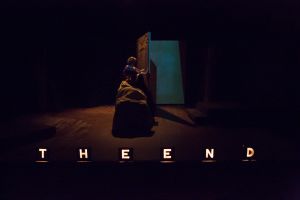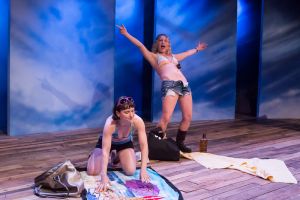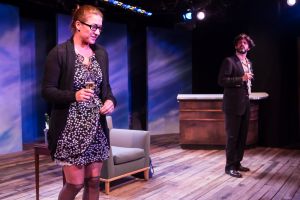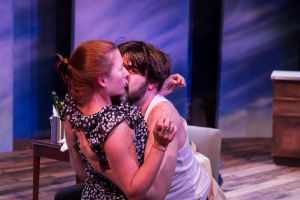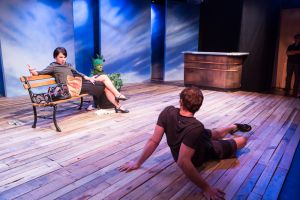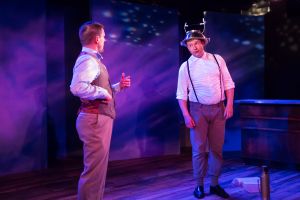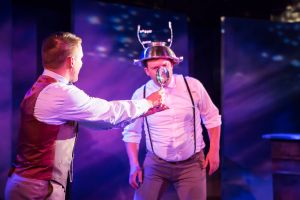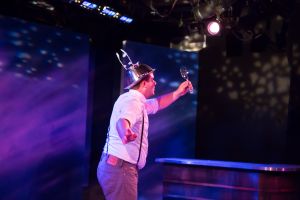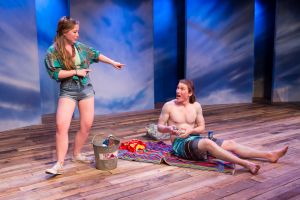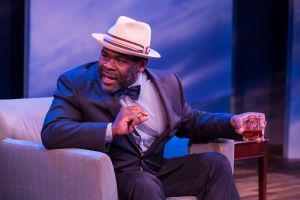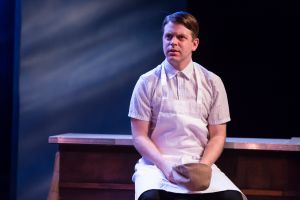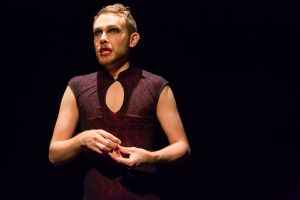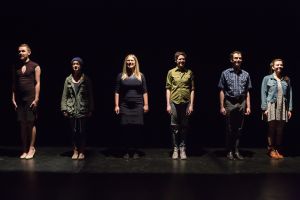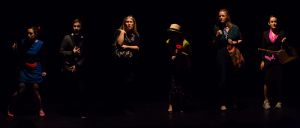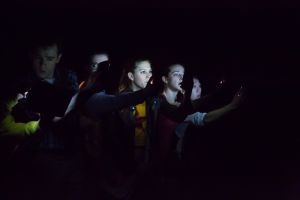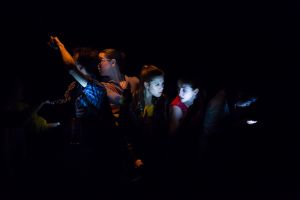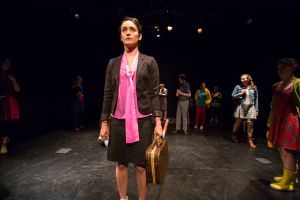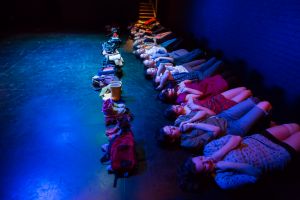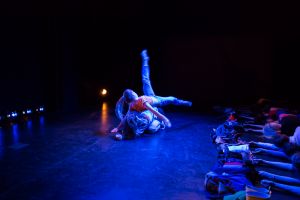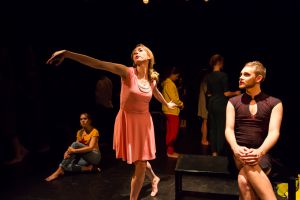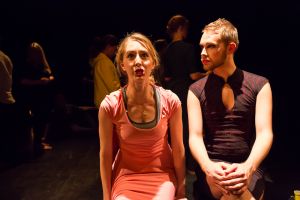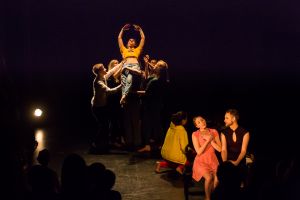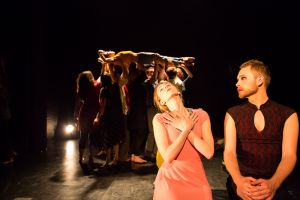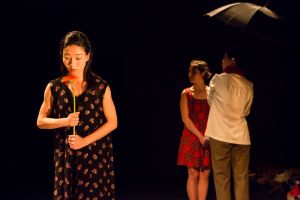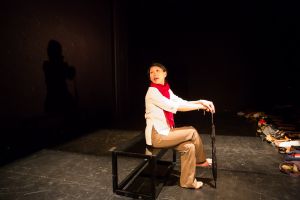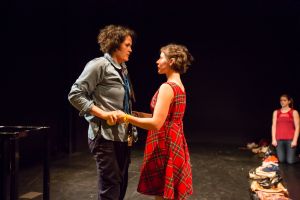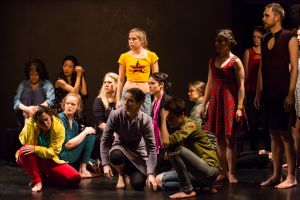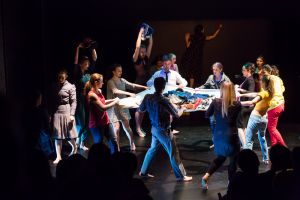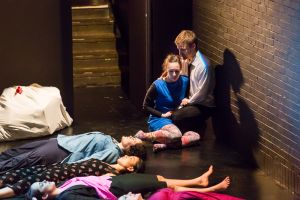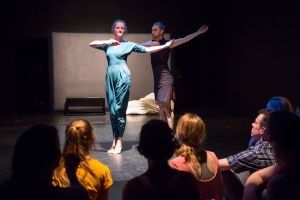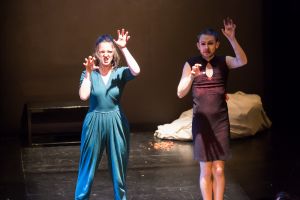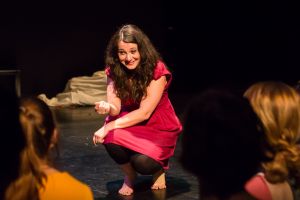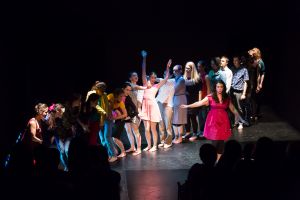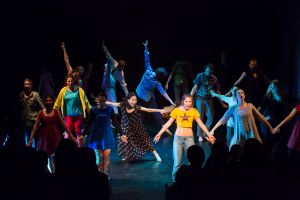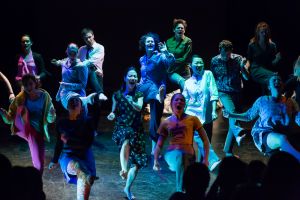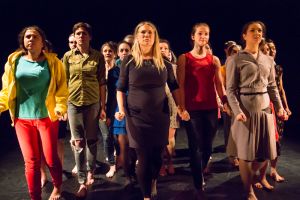I love me some Brian Friel. One of my fondest memories of theatre was a production of Translations in one of Seattle’s small theatres (I think it was AHA!) I haven’t seen as much as I would like, so I was happy to get the call from my friend Janet at T. Schreiber to come shoot their production of Philadelphia, Here I Come!
It is amazing how much theatre you can fit into the small spaces in NYC. The show is at the Gloria Maddox Theatre, where I’ve shot (and even performed) for a few Nylon Fusion shows. The set is very evocative of a small Irish home of the 1960s and provides some nice levels and playing spaces for the actors.
The play gives us the last night in Ireland for Gar O’Donnell, before he heads to Philadelphia to stay with his aunt and uncle and work in a hotel. He’s leaving behind his father and his job at his dad’s shop. The action is commented on by Gar’s inner voice, his conscience, who seems to say what the public Gar wishes he could. We see several of the characters who make up his life in Ireland — his widower father who is more boss than father, the doddering headmaster, who might have been the father he could have had, the mother figure housekeeper, his mates and the local Canon who comes to play checkers with his dad. All of these characters seem to be living their lives by rote. Even with Gar leaving the next day, not too much seems to be changing about their daily interactions.
Gar is also “visited” by some figures from his past and future — Kate, the girl who got away, and her father Senator Doogan, who made Gar quite aware that he was not good enough for his daughter and his mother’s sister, his uncle and their friend, all visiting from America and the reason he is invited to come live with them in Philadelphia.
All of these people (with the exception of the American contingent) all seem to be on the verge of asking Gar to stay and he seems so on the edge, that given any excuse — any deviation from the daily ritual of his life — he would stay. But we never see it happen.
Performances were strong all around and the direction (Jake Turner) kept me wondering if Gar would find what he’s looking for — either in Ireland or in Philadelphia.


